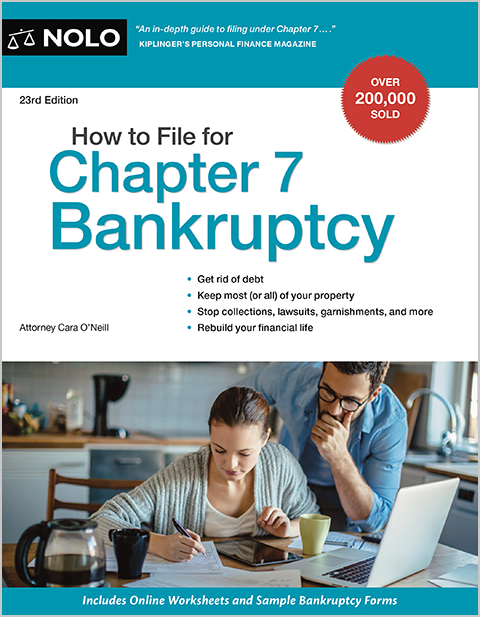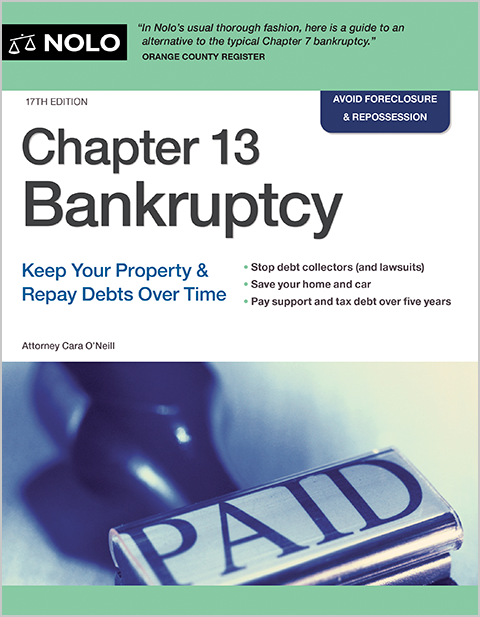If you can't make your plan payments, you might be able to modify (change) them during your Chapter 13 case.
If your Chapter 13 payments are too high, you have options. The preferred option is modifying the Chapter 13 plan payment. This article explains the requirements for a Chapter 13 plan modification and the options if you can't meet them.
Proposing a Chapter 13 Plan
When you start a Chapter 13 case, you file your proposed Chapter 13 plan and other bankruptcy paperwork and documents. If no one objects to the plan or all objections get resolved, the court will "confirm" or finalize it.
From then on, you must make timely plan payments until you complete the plan. If you can't, the court will dismiss your bankruptcy case.
When Chapter 13 Payments Are Too High
Sometimes, everything doesn't go as planned, and your income drops, making it impossible to pay your plan payments. For instance, many people can't continue with Chapter 13 after losing a job, getting sick, filing for divorce, or incurring an unexpected expense like a major car repair.
In these instances, your bankruptcy attorney might suggest that you modify your plan to catch up on your payments.
Chapter 13 Plan Modification: Timing
You can modify your plan both before and after confirmation.
- Modification before confirmation. Depending on the case or the court, it can take anywhere from two months to over a year before the court confirms your case. If your circumstances change during this time, you can explain your situation and file an amended plan for the trustee and creditors to consider. If everything is satisfactory, then the court will confirm your latest plan.
- Modification after confirmation. If the court already confirmed your bankruptcy plan, you must make a motion (ask the court) to modify your plan payments to an amount you can afford. The court and the trustee will ask you to explain why you need to change your plan payments and provide proof of your changed circumstances (such as a job loss or a reduction in income). If satisfied, the court will order a new plan payment for the duration of your case.
Chapter 13 Plan Modification: Limitations
You must pay particular debts in your Chapter 13 plan, including some taxes and all domestic support obligations known as "priority debts," as well as any mortgage arrears on properties you wish to keep. Filers with this kind of debt often run into problems when attempting a modification. Here's why.
If your plan payment amount was sufficient to pay off required debts, then you probably won't be able to reduce your plan payment unless you give up a property on which you were paying arrears. However, if your previous plan paid a percentage to your nonpriority unsecured creditors, such as credit cards, medical bills, and other debts that qualify for discharge, you can reduce your plan payment by reducing or eliminating the portion going to these creditors.
To learn more, see Debts That Must Be Paid in a Chapter 13 Bankruptcy.
When a Modification Doesn't Work
If you can't complete your plan payments and a modification isn't possible, you might want to convert your case to a Chapter 7 bankruptcy. However, you could lose property if you filed for Chapter 13 to save property you would have lost in Chapter 7. Another option is to request a "hardship discharge" by filing a motion with the bankruptcy court.
The Chapter 13 Hardship Discharge
Before receiving a hardship discharge, you must convince the bankruptcy judge that you suffer from more than a temporary job loss or disability. Qualifying for a hardship discharge requires you to show that your circumstances will likely be permanent, meaning that you probably won't be able to make your Chapter 13 plan payments before your plan term ends.
Also, you'll have to meet the "best interests of creditors" test by showing that you've paid your unsecured creditors at least as much as they would have received had you filed a Chapter 7 case.
- You'll pass the test if all of your property is exempt. Unsecured creditors receive nothing in a Chapter 7 case when the filer can protect (exempt) all property. In that case, the best interests of creditors test won't be an issue because you won't owe anything to unsecured creditors.
- If you have nonexempt property, you might not pass the test. But, if some of your property isn't exempt, your Chapter 13 plan payments would have to be high enough that your unsecured creditors would receive an amount equal to the value of your non-exempt property. For purposes of a hardship discharge, this is a difficult condition to meet. In many jurisdictions, the Chapter 13 trustee, who collects the payments and distributes them to creditors, will pay higher priority claims first, and unsecured creditors won't be paid anything until the end of the case.
Example: When Ashley filed her Chapter 13 case, she had company stock worth $10,000, but no exemption to cover it. Therefore, before she could get a hardship discharge, her Chapter 13 plan payments needed to be enough to pay unsecured creditor claims at least $10,000 total. Three years into her plan, she suffered an accident. At that point, the trustee was still paying secured claims, like her mortgage arrearages and car loan, and hadn't paid anything to unsecured creditors yet. Barbara wouldn't qualify for a hardship discharge because she hadn't paid anything toward the necessary $10,000.
Read Types of Creditor Claims in Bankruptcy: Secured, Unsecured & Priority to learn about claim types in bankruptcy.
Debts Discharged by a Hardship Discharge
A hardship discharge isn't as broad as a regular Chapter 13 or Chapter 7 discharge. Although most general unsecured debts get eliminated, you'll likely remain liable for other claims, including:
- priority claims
- secured debts (including past due payments)
- debts not listed in the bankruptcy paperwork
- student loans
- most federal, state, and local taxes, plus any amounts borrowed to pay those taxes
- child support, alimony, and debts resulting from a divorce or separation decree
- fines or restitution imposed in a criminal proceeding
- debts for death or personal injury resulting from intoxicated driving, and
- loans taken from a pension or profit-sharing plan.

